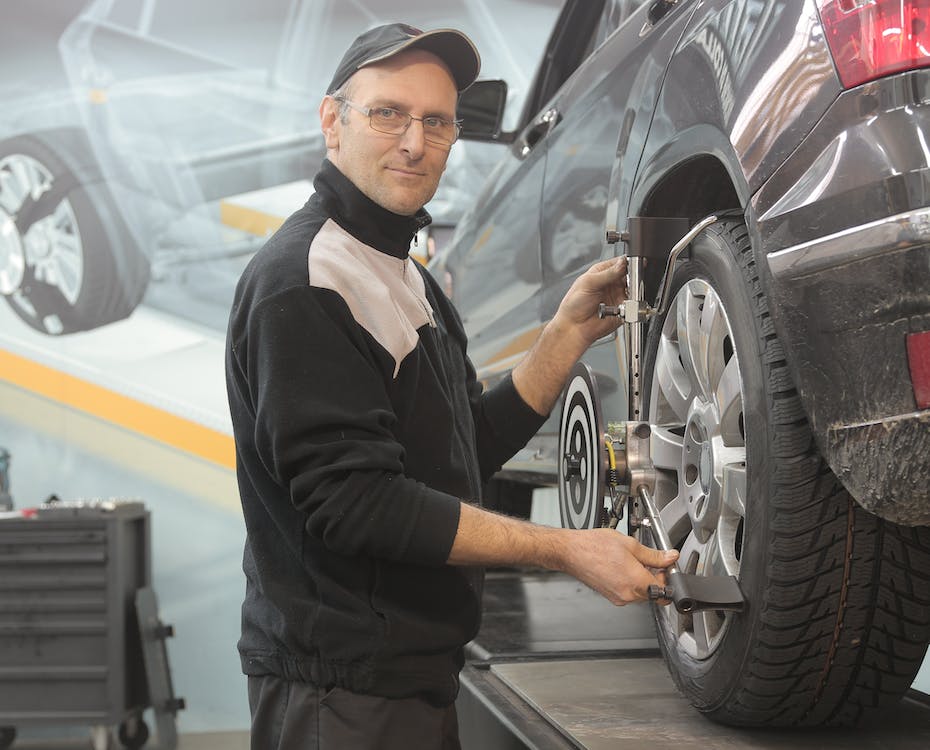How does an air compressor work? Air compressors are used every day for different purposes. If you are a car owner, you have probably used air compressors to inflate your car tires. But the thing is, despite how often they are used, their working principle is mostly unknown.
In this article, we will explain how an air compressor works by showing the inside mechanics of this valuable machine. So, if you are curious about air compressors, hang in there as we uncover their working principle.
This article also addresses the following issues:
- What are the uses of air compressors
- What is the PSI for a good air compressor
- What are the types of air compressors
- Common air compressor problems
What Is The Working Principle Behind Air Compressor?
The air compressor takes in air from the atmosphere, compresses it, and intensifies its pressure. The air is then stored in a container. From the container, the air is transferred via a pipe to where it is needed.
So, as a machine, the air compressor works by pushing pressurized air into a storage vessel. The pressurized air goes out of the storage vessel via an opening in the tank. Then it is used for inflating tires and for other purposes.
An engine drives the air compressor. This engine converts electrical energy to kinetic energy. This is the same energy used in a combustion engine. With the use of the piston, crankshaft, and pump cylinder, the air compressor can use the energy produced to power other pneumatic tools. Some of the tools powered by the air compressor include tires, nail guns, spray guns, and drills.
What Are The Uses Of Air Compressors?
Air compressors come in a host of sizes and designs. Due to their configuration and capacity, these machines can perform a host of functions. This is one of the reasons why they are used in many industries. Here are some of the uses of air compressors.
Inflating
Mechanics and car owners use air compressors to inflate car tires. But the multifaceted nature of the air compressors does not limit them to car tires alone. Air compressors can also inflate motorcycle tires, bike tires, truck tires, balloons, sports equipment, pool accessories, and air beds.
Heating, Ventilation, and Air Conditioning (HVAC)
The HVAC unit has an air and heat pump system in it. This system has an inbuilt rotary screw. This is like an air compressor because it compresses the air vapor. This also applies to the A/C of your vehicle.
Spray Painting
The air compressor is used for spray painting by controlling airbrushes. This helps in repainting vehicles. This can come in handy when you decide to repaint your car.
Pressure Cleaning or Washing
Pressure washing requires compressed air. The air compressor can only provide this compressed air. This can also help in washing your car. However, for pressure washing a car, the PSI should be set between 1200 and 1900. This is to ensure that the paint of your vehicle is not damaged.
What Is The Psi For A Good Air Compressor?
The thing with air compressors is that the Pound per Square Inch (PSI) is not determined by the compressor itself but by your tools and their requirements. So, the PSI for the compressor you intend to get is totally up to you and your tools. However, most air compressors are designed with a PSI as high as 175.
The average air compressor has about 90 to 100 PSI (between 6 to 7 bar). So, what then is the PSI for a good air compressor? We believe it boils down to your tools. If your tools require high pressure, you would need an air compressor with about 15 to 30 bar. That should be between 200 to 430 PSI. But if your tools don’t require that much pressure, get an air compressor with the average recommended PSI. That’s 150 PSI and about 10 bars. Still, ensure you check your tools to know what amount of compressed air they need.
What Are The Types Of Air Compressors?
There are mainly four types of air compressors, and they all come in different sizes and capacities. However, according to the mechanics, air compressors can be grouped into positive displacement and dynamic air compressors.
Positive displacement air compressors use a host of inner machinery to displace air and produce pressure. The main thing here is that the air is gotten from the outside and stored in a compartment or casing. The air is then compressed and pressurized inside this compartment to produce energy. The reciprocating and rotary air compressors are examples of this.
On the other hand, dynamic air compressors generate pressure by bringing in air through the rotation of the blades. Then the kinetic energy produced is then stored in the compressor. The axial and centrifugal air compressors fall into this category.
However, below are the four main types of air compressors available.
Rotary Air Compressor
The rotary air compressor is the most straightforward in terms of use and maintenance. This displacement air compressor is mostly used in large industries owing to its size. The rotary air compressor has two rotors with lobes. These lobes rotate in opposite directions to create mechanical energy.
The rotary air compressors are designed to work with/without oil; there is no need for lubrication. Along with this, these air compressors can produce 5 horsepower to 350 horsepower. This is why they are designed for constant industrial use.
Centrifugal Air Compressor
This air compressor has a rotor that rotates in an airtight compartment with an inlet and outlet. The centrifugal air compressor is commonly used for large-scale chemical manufacturing plants. The rotation of the rotor converts the kinetic energy into pressure before the air gets out of the compartment. The pressure is amplified by the centrifugal force produced and then the air is let out via the diffuser. Once the air pressure is high, it goes out into the receiver (the tool that requires it).
This dynamic air compressor is relatively easy to use, though not as easy as rotary air compressors. Also, in contrast to rotary air compressors, centrifugal air compressors do not require as much maintenance. They also produce about 1000 horsepower, making them suitable for large tools, projects, and industries.
Reciprocating Air Compressor
This is one of the most common air compressors available because they are mostly used in homes and garages. The reciprocating air compressor is a positive displacement compressor that comprises a piston driven by a crankshaft. The crankshaft is what transfers high-pressurized gasses into the cylinder. The piston working in the cylinder is what compresses the air to provide pressure.
This type of air compressor cannot handle continuous use, and its numerous moving parts are lubricated with oil to ease movement. Owing to the amount of pressure provided by the reciprocating air compressors, they are mostly used for small projects. Some of these projects include tire inflation and minor construction work.
Axial Air Compressors
This type of air compressor is highly expensive, and they are most suitable for ship and airplane engines. The axial air compressors have several rotating blades. These blades keep rotating in a revolving drum which turns in a sealed compartment.
Common Air Compressor Problems
Air compressors, like any other tool, can get faulty at any time. The reason for air compressor failure is dependent on so many factors. Below are some of the most common air compressor failures.
Air Leaks
If you notice that after filling up your tires, the pressure gauge drops down a few units, then you have a leakage problem. You can use soapy water or listen to the compressor to find where the leak is coming from.
Noise and Vibration
If there is a weird noise coming from the air compressor even when it is off, that is indicative of a problem. This can be caused by improper mounting and a bad crankcase. The good thing here is that you can fix this.
Extremely Hot Heat
When your air compressor begins to emit hot heat, it means that the internal system is bad. You would have to either fix it or get a new air compressor.
General Compressor Setup Problem
If your air compressor is failing to start, off, or provide sufficient pressure, then you need to get it checked by an expert.
Conclusion
Air compressors are not only useful in inflating car tires, but they also help in other projects and industries. We know that through this article, you have learned that your air compressor can also be used to repaint your vehicle and pressure wash it as well. The essential thing to note here is that it must not exceed 1200 PSI for safe pressure washing that doesn’t ruin your car’s paint.
Regarding common air compressor problems, it is important to note that maintenance practices can help reduce the chances of compressor failures. So, use your air compressors properly and practice regular maintenance.



Hi, this is a comment.
To get started with moderating, editing, and deleting comments, please visit the Comments screen in the dashboard.
Commenter avatars come from Gravatar.